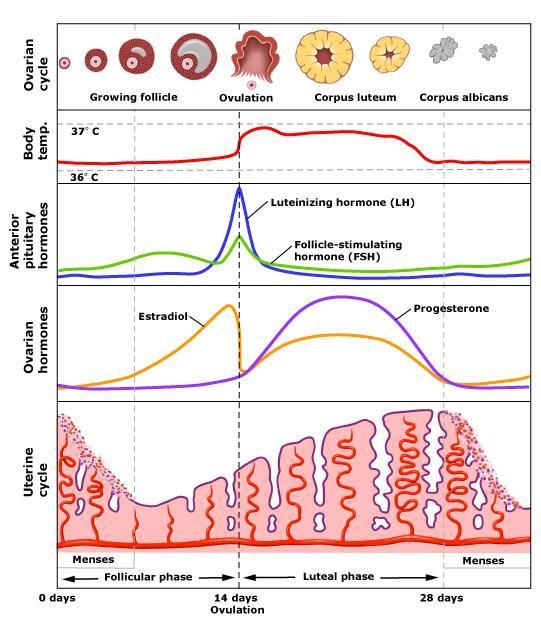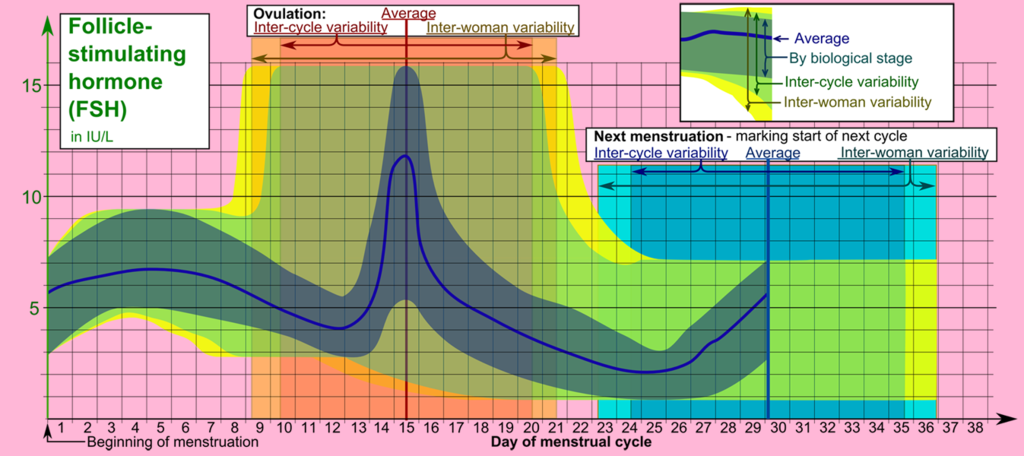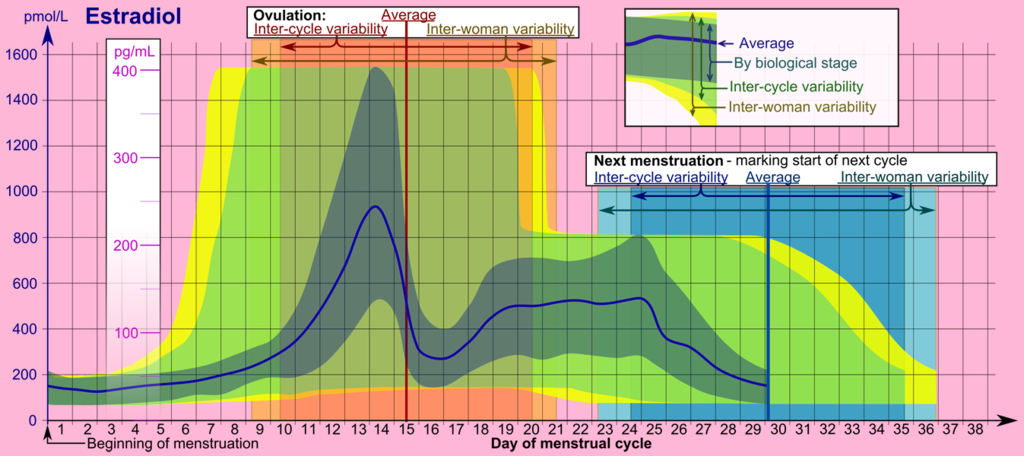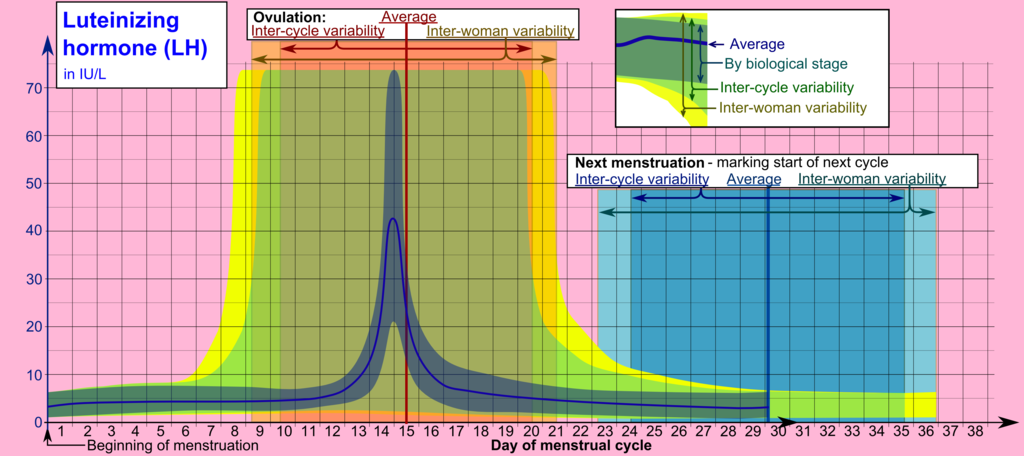Here is a simple chart that visually shows the different things that happen in the cycle. Ignore the temps and the days that are noted. This will vary from woman to woman and Ill explain a bit more down this page.
I want to first define a few things.
A cycle is the whole process from day 1 until day one of the next day. Day one is the first day of a red flow, not spotting. You would count from that day, to the day before the next cycles flow start.
Some ladies will confuse the cycle length for period length; this is the number of days you are bleeding. Again, not counting spotting.
Spotting is bleeding at any time in the cycle that doesnt flow. You may just need a liner, or only see it when you use the bathroom.
Follicle is the fluid filled sac that contains the egg that will (hopefully) be ovulated later.
Egg or ovum is the small cell that will be the part that (again, hopefully) gets fertilized.
Follicular phase is the part of the cycle before ovulation. This is when the follicle is supposed to be growing. This can vary cycle to cycle.
Ovulation is the 15 min process of the follicle rupturing and the egg being released.
Luteal phase is the part of the cycle after ovulation until the period starts. This stays the same for each woman cycle to cycle, give or take a day.
Corpus luteum is the collapsed follicle thats left behind after ovulation, and what produces progesterone that governs the luteal phase.
Lets start by explaining the hormones. There are a few otc supplements that are marketed to balance these hormones. This simply wont truly work because these hormones need to be at different levels at the right times of the cycle. Something that you take everyday at the same dose will either do nothing, or disrupt this balance further. Real fertility meds are given at the particular times in the cycle that they are needed. Youll see what I mean here, and Ill write about some of the different meds in a different section.
These three need to be tested between cd2-4, which is the pre-follicular phase.
First I will start with FSH, or Follicle Stimulating Hormone. This is a pituitary hormone that is given off in pulses to grow the follicle. This should be a nice low number at the begining of the cycle. You want below 10 mIU/ml (much higher than this can indicate diminished ovarian reserve, but needs to be corroborated with more tests). It should raise before ovulation, up to 15 mIU/ml then lower after ovulation. It starts to rise again in the end of the luteal phase to start preparing follicles for the next cycle.
Next comes Estradiol (sometimes shortened to E2). There are different types of estrogen, and this is the type given of by growing follicles. This is not produced in the pituiray, but in the ovaries. This starts off around 25-75
pg/ml, and gradually builds until its about 100-200 per mature follicle. This is the hormone that causes fertile signs in your breasts, cervical mucus, and cervical position. It is also given off by certain types of cysts. This also means some ladies with pcos can have enough immature follicles or cysts to produce a surge of estrogen and get these same fertile signs even though there isn't anything ready to ovulate. I will touch on cysts in yet another part of the blog.
Then LH, or Lutenizing Hormone is triggered by the surge in estrogen. This is produced by the pituitary gland once is senses the estrogen surge. It should start at a lower number, less than 7 mIU/ml. A surge is over 20. This hormone is made to give a final growth spurt to the follicle and make it rupture or ovulate. The surge typically lasts for 2 days and precedes ovulation by around 36 hours. However, they can last longer or be shorter, and take up to 5 days to cause ovulation. In the cases of a false estrogen surge, it will not happen at all since there is nothing mature enough to ovulate. Even still, sometimes a mature follicle will not respond appropriately to the lh surge and doesn't ovulate. This is very rare, but if it happens often, it can be a condition called Lutenized Unruptured Follicle Syndrome. When LH is 2x or more higher than your FSH on cd 3, this could indicate poly-cystic ovarian syndrome, and again, requires more testing to be diagnosed.





No comments:
Post a Comment